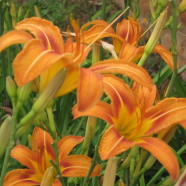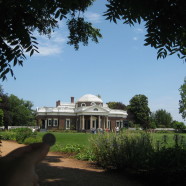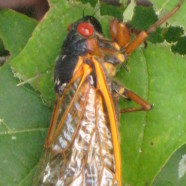Day Lily: Summer Schedule
Day lily. Hemerocallis, which comes from ancient Greek words meaning beautiful day. Day lilies are suddenly all over the place in early July. They start to line the roadsides as though waiting for the Fourth of July parades. The orange bursts of petals among the green are a kind of botanical fireworks. Why the name day lily? If you look on any day lily stalk, you’ll see half-a-dozen buds, each one slightly bigger than the next. With a punctuality that’s pretty amazing, they will open precisely 24 hours apart. So that on one stalk you have, so to speak, the entire schedule for the week. Today...
Read MoreMonticello: A Virginia Native
Recognize this house? You see it every time you spend a nickel. Thomas Jefferson knew from the time he was a little boy that he wanted to live on the top of this particular little mountain near Charlottesville, Virginia. He was still a youngster in his twenties when he got started on his goal. Using slave labor, he had the top of the mountain cleared, flattened to create a building space, and started building his dream house. And then he had to leave it. He had to go and do stuff like write the Declaration of Independence, and be President, and so forth, and leave the peace and quiet...
Read MoreJamestown: Faces from the Past
Jamestown, Virginia. It’s not an actual town, it’s a historic site, of course. No one lives there but ghosts. Actually there are two Jamestowns. There’s a National Park at the actual location of the first settlement in North America, and it’s an active archeological site—very educational, but not much action. And then there’s the much more commercially successful Living History Museum—the sort of place where the staff wear doublet and hose and pretend to churn butter and shoot off cannons and such. And I’m a sucker for living history. I’ve always wanted to do that—dress up in a long skirt,...
Read MoreMullein: Yellow Lights
Cruising along Route 81 in Virginia, and I just had to pull over to take a look at these yellow stalks. I have never seen such gorgeous mullein plants. Common mullein is an odd wildflower, like a fencepost sticking straight up out of the ground. Little yellow flowers bloom up and down the stalk, each individual flower opening for only one day. At least at home in upstate New York the flowers are little, but here in the sunny south they’re the size of roses. They’re not a native plant, but not generally invasive. They love dry open ground where nothing else is growing, and can’t...
Read MoreMagic Cicada
Driving south on the Thruway, and I slowly become aware there’s a strange buzzing noise going on. Oh, god, no—must be something with the engine. It’s a penetrating, grating sound, clearly mechanical. I slow down—it gets louder. I roll down the window—it rises to an eerie shriek. I stop at the first rest area, and turn the car off. The noise keeps going. My ears actually hurt with the most annoying sound ever devised by nature: the love song of ten million cicadas. The fence at the edge of the rest area is draped with bittersweet and poison ivy vines, and the metal chain links are practically...
Read MoreCinnamon Fern: Summer Plumes
Cinnamon Fern. Osmundastrum cinnamomeum. (At least that’s the Latin name as of the moment, they seem to keep on changing names and reclassifying plants more often than I change my socks.) Many thanks to Frank Knight for this lovely photo–what a nice birthday present! Delicious as it looks, the brown stuff isn’t really cinnamon, of course. In fern-speak, the fuzzy brown stalks are called fertile fronds–leaves whose function is to help the plant reproduce. The fertile fronds grow sori, which are containers for dust-like brown spores. The green leaves are called sterile...
Read More









Recent Comments